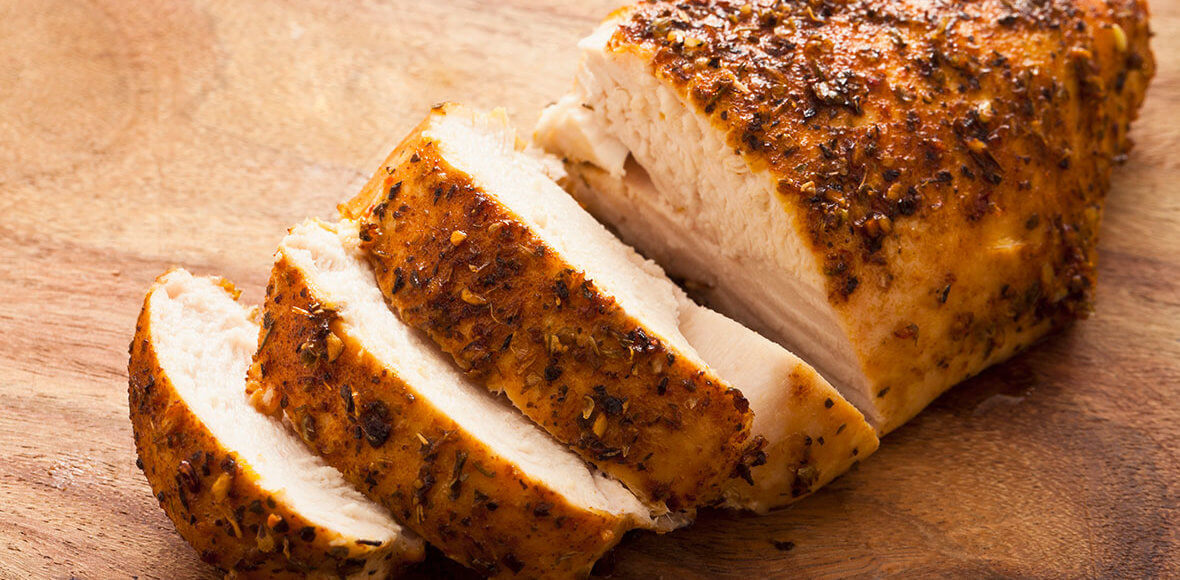
How to Cook Chicken Perfectly, Every Time
Ever sawed away at a dry hunk of overcooked chicken? Or, worse, bit into a rubbery morsel of poultry that wasn’t cooked through? Well, the good news is – it never has to happen again.
Avoiding overcooked and undercooked chicken is easy with a meat thermometer. It is an essential kitchen gadget that will save you from a ruined dinner and, importantly, foodborne illness. This is because uncooked chicken, like all uncooked foods, may contain harmful bacteria, which can be especially deadly to infants and children, older adults, pregnant women, and those who are immunocompromised. That is why we always ensure our chicken is cooked to 165°F (74°C). At that temperature, any harmful bacteria is killed.
But how do you know if your chicken has reached that temperature? Not all ovens, grills, and stovetops can be relied on to give us accurate temperature readings. Cutting into the meat isn’t always reliable either — especially when grilling in low light or at dusk where it’s difficult to tell what colour the meat is. This is why the meat thermometer is essential.
There are a wide variety of digital and non-digital models of meat thermometers to choose from. While they range in price from around $30 to more than $100, the most basic instant-read thermometer will suffice. You’re looking for accuracy and reliability, especially when it comes to food safety, so it’s always a good idea to research whichever thermometer you choose.
Meat thermometers are also relatively small, so they can be tucked away in a kitchen drawer, and their size makes them perfect to take along camping or for a picnic BBQ.
A basic meat thermometer has two parts: a display at the top and a long metal probe sticking out of the gauge.
The display: Some thermometers have a straightforward digital readout, and some have a mechanical gauge. The gauge-style typically has a large red or black arrow that will move accordingly to the temperature of the meat. Gauges typically mark out different zones or ranges: the “danger zone” is anywhere between 39°F (4°C) and 140°F (60°C), while “Safe zones” vary according to what kind of meat you’re cooking. Unlike beef, which can be safely eaten at lower temperatures (think rare, medium-rare, etc.), chicken must reach 165°F (74°C) to be safely eaten. Some gauges will boldly mark this temperature out; some even have a picture of a chicken next to it.
The probe: the probe should be inserted into the centre of the thickest part of the meat. Avoid touching the bone, fat or gristle. Leave it there for about 10 seconds or until the numbers stop moving. Now you can take your temperature reading— this will help you decide whether to cook your chicken longer or if it’s done. The probe can be inserted into the meat while it’s cooking to take a reading, but it’s best not to leave it in unless your meat thermometer indicates that it is oven/grill-safe.
It’s perfect for chicken burgers too, but for these you’ll need to insert the meat thermometer’s probe into the side of the burger patty to get an accurate temperature reading.
For perfectly cooked poultry, Health Canada recommends the following temperatures the meat must reach to be safe:
- Whole chicken (stuffed or unstuffed): 180°F (82°C)
- Chicken breasts, thighs, legs, and wings: 165°F (74°C)
- Ground chicken (meatballs, burgers, sausages): 165°F (74°C)
- Frozen chicken products (nuggets, fingers, strips, burgers): 165°F (74°C)